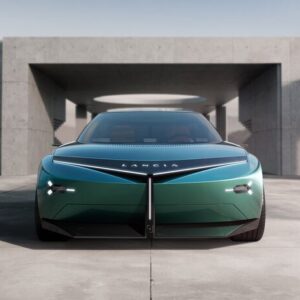We’ll need it soon.

One of the industry’s first computer-integrated vehicles was the 1968 Volkswagen Type III “Squareback,” which employed Bosch Jetronic computerized electronic fuel injection. In the years since, vehicles have inched closer and closer to powerful desktops, and they’ll soon gain a feature primarily known for its use in high-end gaming PCs.
We recently attended Continental’s TechShow in Frankfurt and quickly rediscovered the breadth of the automotive supplier’s expertise; it goes way beyond tires.

Among the booths showcasing next-gen infotainment, so-called vegan leathers, and clever facial recognition was a quirky German fellow surrounded by bubble-filled columns of water. Turns out the bubbles were just for show, but the water itself was a hint at a clever innovation from the Conti folks.
The rep went on to demonstrate a plug-and-play modular computing architecture that can be easily exchanged or updated, similar to the modularity of some PCs, but what enables that tech is more interesting. Current vehicle ECUs are difficult to repair or replace because they’re secured with messy thermal paste to close the gap between the heatsink and ECU and maximize thermal efficiency.
The folks at Continental have instead cracked the code on building a water-cooled vehicle ECU.

Flexible, coolant-filled, foil channels squeeze between the vehicle computer and cooling element, and as the pressure within them builds, the channels expand. That expansion closes the gap without the need for the thermal paste that complicates the replacement process, plus water cooling will allow ECUs to produce more power and dissipate more heat.
As the share of software-defined vehicles across our industry continues to grow and we ask our transportation machines to perform more complex computing tasks (like autonomous driving), manufacturers will need to pay more attention to CPU cooling. Continental’s solution could be the way forward.





